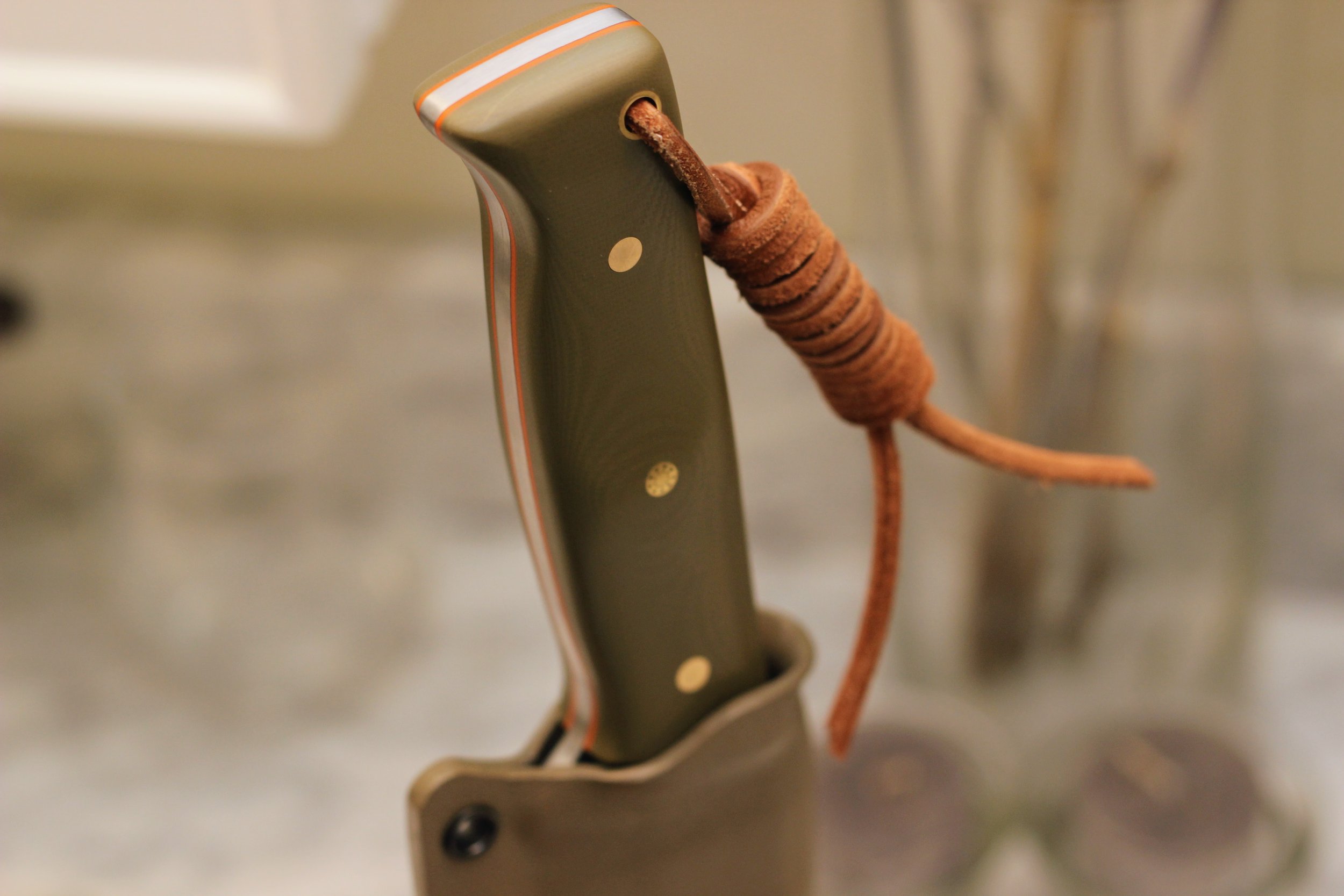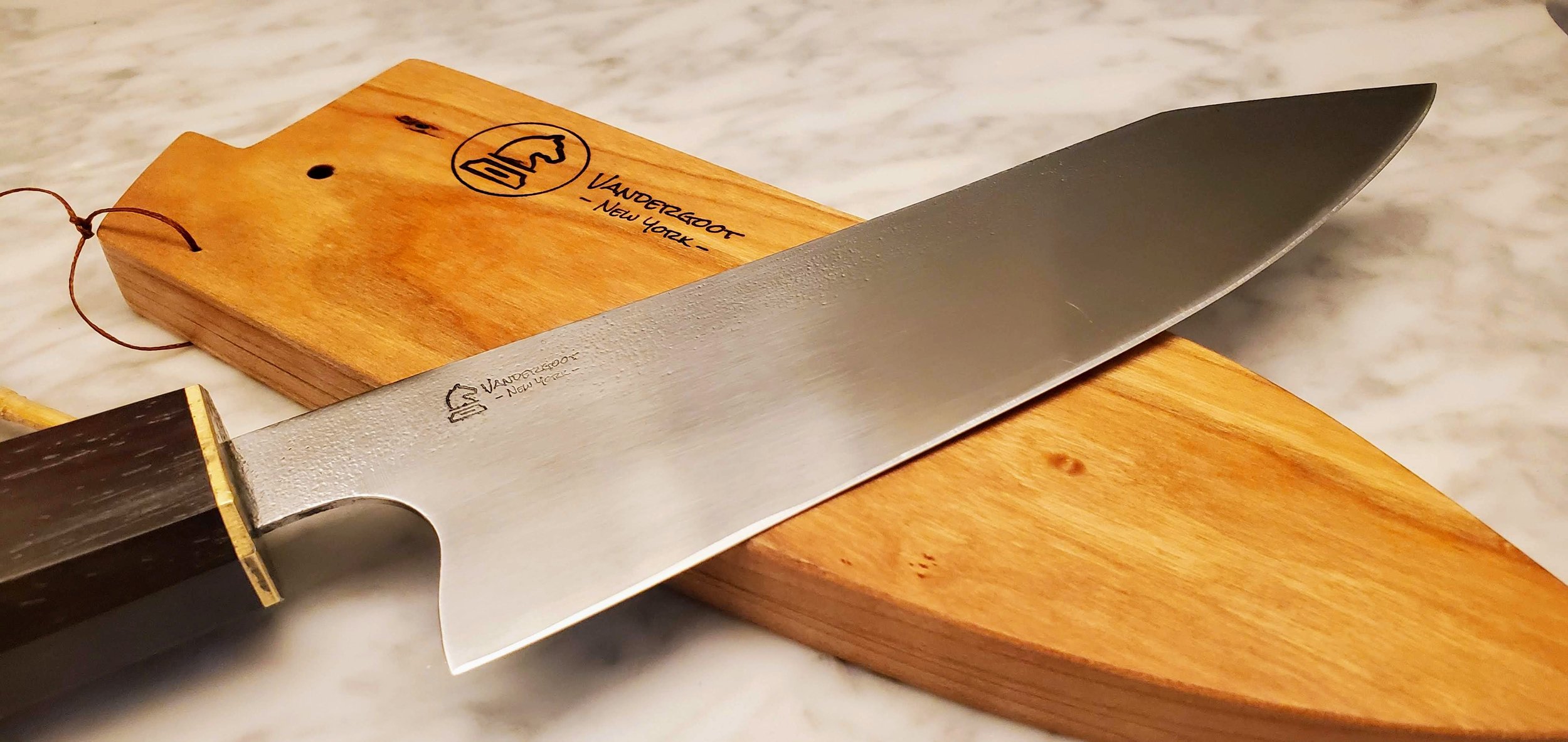The difference between a full tang knife and a hidden tang knife is simple: whether or not you can see the piece of steel that forms the handle of the knife. With typical full tang knives, the tang is sandwiched between two pieces of material (known as “scales”) that are sanded and polished to ensure a wider and more comfortable grip. On typical hidden tang knives, the tang is fully enveloped by handle material, and it extends a significant length down the handle where it is held in place by pins or epoxy.
There have been arguments that full tang culinary knives are more robust and better for heavier chopping work, because there is more leverage and handle strength. If that were completely true, knife and sword makers would have long ago abandoned hidden tang cutting tools had they proved to be inferior.
Popular fighting weapons like medieval swords, bowie knives, and traditional kukris were all made with hidden tangs. They were all designed for hard use, cutting through flesh, bone, and in some cases wooden shields and armor! So what’s the deal? If these tools could do fine without the full tang, why not culinary knives?
The truth is it doesn’t really matter. All one needs is a strong handle design to withstand the knife’s intended use. A good maker with a proven design will provide that. If you prefer full tang knives, that's your choice and that's what really matters. If you prefer hidden tangs, that’s fine too. I can provide you with both.

